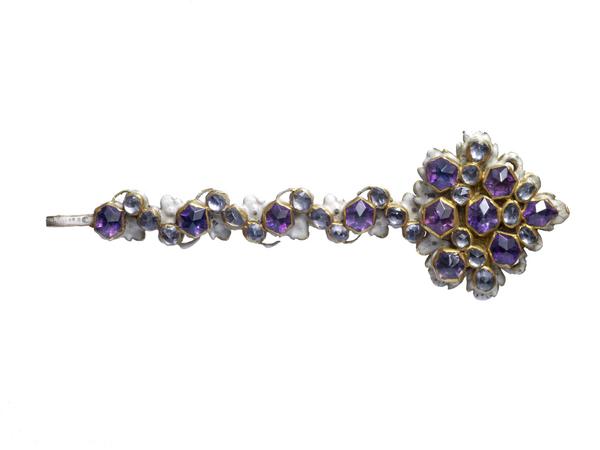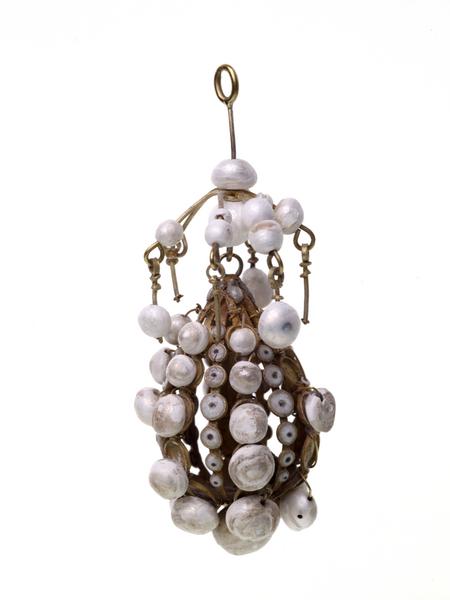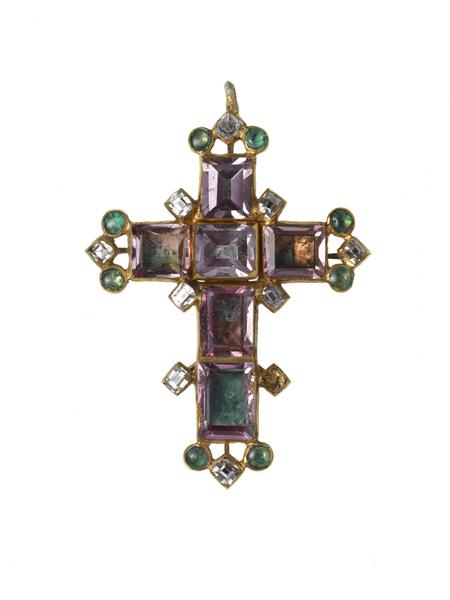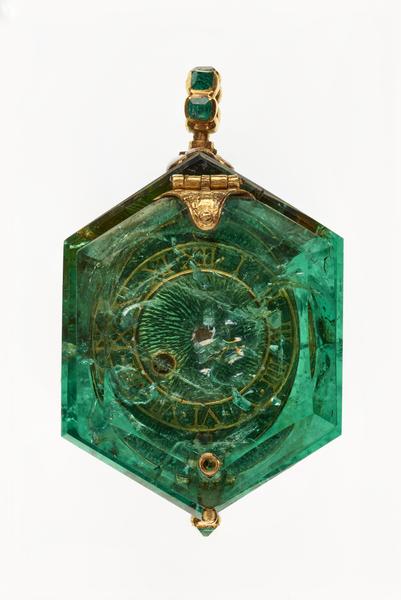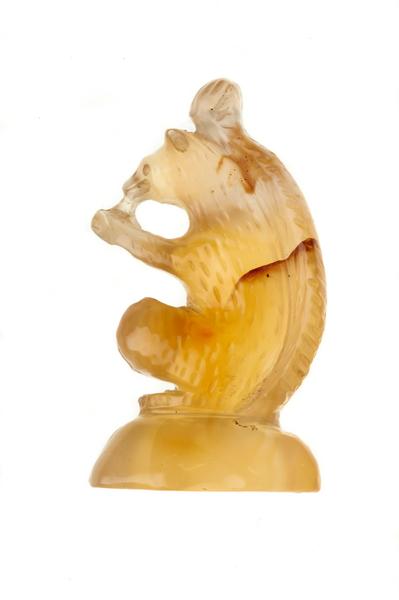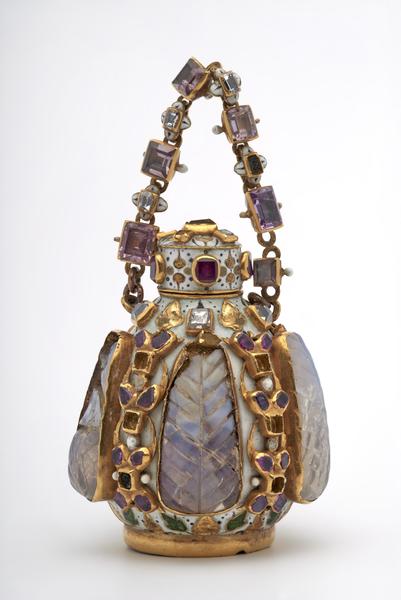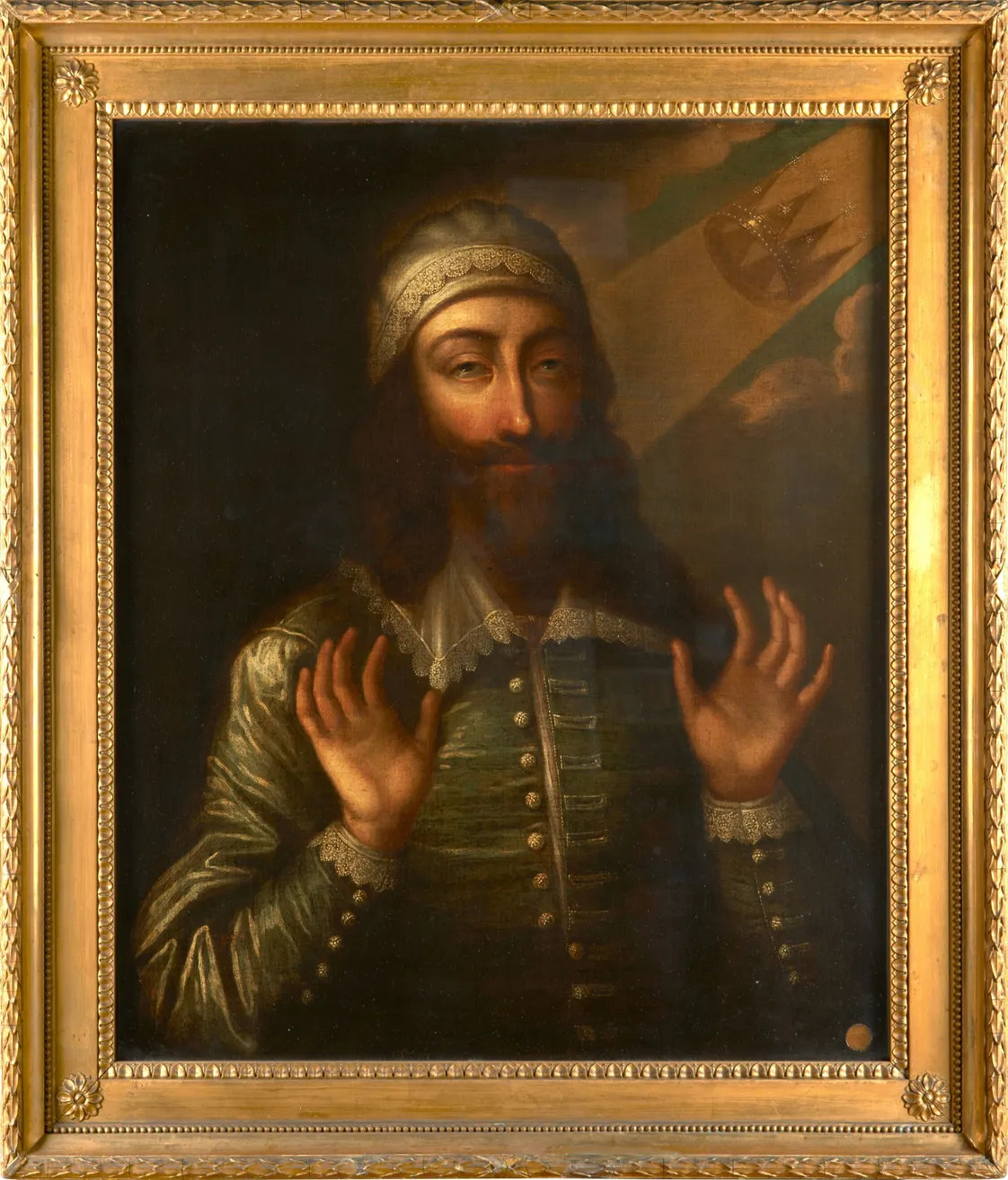Jewels of the Cheapside Hoard
The Cheapside Hoard is bursting with masses of extravagant 400-year-old jewellery.
Cheapside, City of London
1640–1666

One of nearly 500 objects found in the Cheapside Hoard. The ring's moonstone is carved with the image of a frog.
The best of the bling
This buried collection of precious objects was unearthed by workmen in 1912.
Hidden at some point between 1640 and 1666, it probably belonged to a trading goldsmith jeweller.
Containing nearly 500 items, this is the greatest collection of 16th- and 17th-century jewellery ever found. And almost all of it is in our collection at London Museum.
The emerald-cased watch

Part of the Cheapside Hoard.
The case for this spectacular watch is made from an enormous emerald, which has been hollowed out to house the mechanism.
The emerald comes from Muzo, Colombia, and has been cut by someone with extreme technical mastery, possibly in Seville, Lisbon, Geneva or London.
The salamander brooch

Part of the Cheapside Hoard.
In the 16th and 17th centuries, the salamander was believed to be able to withstand fire, making it a symbol of resurrection.
Salamander jewellery was very popular. This amphibian is set with Colombian emeralds and Indian diamonds. Its teeth are shown with painted enamel.
The squirrel pendant

Part of the Cheapside Hoard.
This carving of a red squirrel is made from a mineral called carnelian.
Squirrels were admired by Renaissance philosophers for their agility and resourcefulness. This one has plenty of charm, and was probably designed for a pendant or pin.
The ship pin

Part of the Cheapside Hoard.
The Cheapside Hoard provides unique information about London’s role in the gem and jewellery trade in an age of global conquest and exploration.
The head of this pin takes the shape of a ship – London’s connection to the wider world – with gold rigging and mast, and a pearl for its hull.
The scent bottle

Part of the Cheapside Hoard.
Whatever this jewelled bottle held, the contents were chosen for their smell. A dash of perfume on gloves, handkerchief or skin was thought to offer protection from disease.
Many of the ingredients used to make perfumes came from Asia, via the same trade routes as gemstones.
The fake

Part of the Cheapside Hoard.
Three jewels in the Cheapside Hoard aren’t quite what they seem. This jewel contains artificial gems of red and green glass. And two rock crystal pendants were made to look like valuable balas rubies, also called spinels.
The portrait of Elizabeth I

Part of the Cheapside Hoard.
Cameos are carved stones which can be mounted on all kinds of jewels and other decorative items.
This one, made from the mineral agate, shows Queen Elizabeth I. The queen often gave out miniature portraits of herself to her friends and supporters.
The grapevine pendants

Part of the Cheapside Hoard.
These juicy-looking grapes are amethysts, and the hoard also includes versions in green, made from emeralds.
A similar pattern appears in a book of designs by the Dutch jeweller Arnold Lulls, who was working in London between 1584 and 1642.
The diamond solitaire ring

Part of the Cheapside Hoard.
Almost half of the rings in the hoard take the shape of a rose, with a central emerald or garnet surrounded by smaller stones. Others hold a single diamond, amethyst, sapphire, cat’s eye or moonstone. Two seal rings use Roman gems from the 1st century CE.
The enamel around the hoop of this diamond ring means it couldn’t be resized, and must have been made for someone young or with small fingers.
The enamelled chain

Part of the Cheapside Hoard.
There are 30 chains in the Cheapside Hoard. This one is over a metre long, and is made up of alternating roses, leaves and floral bows.
In the 16th and early 17th century, lengthy chains were extremely fashionable. They were worn in a series of loops reaching all the way down to the waist, and were fixed to avoid tangling.
The rose button

Part of the Cheapside Hoard.
The hoard features a number of beautiful little buttons like these. Some are mounted with rubies and diamonds. Others, like this one, are shaped into a double rose, with white and coloured enamel.
Members of the royal court and household received buttons as New Year’s presents.


